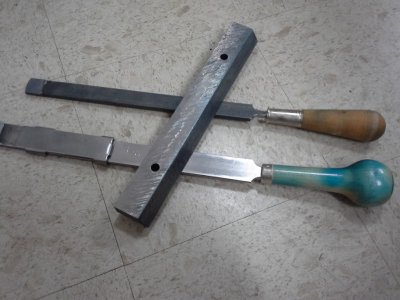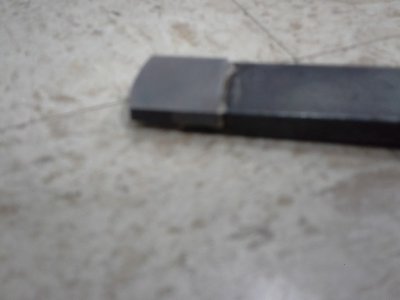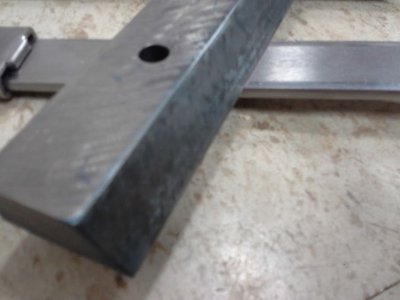So I am endeavoring into learning how to scrap and correct machines alignment. I need to buy a scraper or make one, I need to get the tooling to clean up dovetails, what should I buy or look for? Should I get dovetail cutters with replaceable bits or will the basic cutters work. I have started with creating straight and flat surfaces on a milling table with a surface grinder, now I need to correct the ways....So I need to get/make the next tools to do this. Tim
As for milling cutters to roughly correct things, I think a fly cutter with some high speed steel bits is fine for correcting a way. You should only be taking a tiny bit off, and you shouldn't worry about cutting time. The setup time will be the big one, not the cutting time. If you want carbide, I would recommend just grinding some brazed carbide bits. If you go with inserts and you find they aren't the right angle, etc. What do you do? You grind them and then they aren't any better than the cheap brazed on bits.
Do measure things before you get too excited about milling things straight. If you aren't off by more than 0.005", you might just consider only scraping it - it might be faster.
For a scraper, I have a hand scraper (
http://www.mcmaster.com/#3643a17/=ogqrqw, or similar). You can make your own, too. Carbide tips only. If not, you will be sharpening forever. I have scraped a 6" x 6" x 6" angle plate with it and it works, but it sure is a lot of work. You will find out how strong and steady you are if you go this route. I also got an ancient Biax on ebay. Works great and I'll never go back. I bet I am 10 x faster with my Biax. And maybe more accurate, too.
No matter what you use for a scraper, you will need:
- Blue marking compound -
http://www.artcotools.com/die-spotting-ink.html
- Surface plate
- Foam roller or brayer for spreading the blue
- Grinding stone for deburring -
http://www.artcotools.com/india-round-edge-slip-stones.html
- Some way to sharpen your scraper. Carbide stays sharp for a long time, but it needs to be perfect or you will just scratch things up.
--A glendo lapper is ideal
http://www.hobby-machinist.com/show...-tilt-table-grinding-machine?highlight=glendo
-- There are clones people have made here
---
http://www.hobby-machinist.com/showthread.php/11032-Glendo-lapper-clone?p=91356#post91356
---
http://www.hobby-machinist.com/show...sive-Scraper-Blade-Sharpener?highlight=glendo



